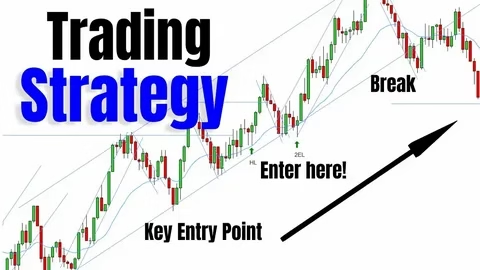In a volatile market where prices move unpredictably, traders often look for strategies that can generate profits regardless of market direction. One of the most reliable and time-tested methods is pair trading — a market-neutral strategy that involves taking opposing positions in two correlated stocks. The idea is simple: profit from the relative performance of the pair rather than the overall market trend.
Let’s explore how pair trading works, what makes it effective, and how to build the best pair trading stocks strategy for consistent returns.
What Is Pair Trading?
Pair trading is a statistical arbitrage strategy. It involves identifying two stocks that historically move together — for example, large companies in the same sector such as Coca-Cola and Pepsi, Visa and Mastercard, or Ford and General Motors.
Here’s how it works:
-
When the price relationship between the two stocks diverges (one goes up while the other lags), you go long on the underperformer and short the outperformer.
-
When their prices converge again, you close both positions, capturing a profit from the relative change.
This strategy doesn’t depend on the overall market direction — it’s market neutral, meaning it can perform well in both bull and bear markets.
Why Pair Trading Works
Pair trading is based on the concept of mean reversion — the idea that related assets will revert to their historical relationship over time. For example, if two airline stocks have moved together for years but suddenly diverge due to short-term market noise, a trader can bet that the relationship will normalize.
Key reasons it’s effective:
-
Market Neutrality: Profits come from relative movement, not from predicting market direction.
-
Reduced Risk: Since you hold both long and short positions, your exposure to market-wide risk (like inflation or rate hikes) is minimized.
-
Statistical Edge: The strategy uses data, not emotion — making it a systematic and disciplined approach.
How to Build the Best Pair Trading Stocks Strategy
To create a profitable pair trading setup, follow these steps:
1. Identify Correlated Stocks
Use statistical tools to find pairs with high correlation (close to +1). Stocks in the same sector often fit this criterion — think of Bank of America vs. JPMorgan, or Apple vs. Microsoft.
You can use:
-
Correlation coefficient to measure the strength of the relationship.
-
Cointegration tests (like the Engle-Granger test) to verify if the two stocks move together over time.
2. Monitor the Spread
Calculate the spread between the two stock prices — often the difference between one stock’s price and a multiple of the other.
If the spread deviates significantly from its historical mean (say, more than 2 standard deviations), that signals a potential trade setup.
3. Execute the Trade
When the spread widens:
-
Go long on the underperforming stock.
-
Go short on the outperforming stock.
When the spread reverts to the mean, close both positions and lock in your profits.
4. Use Stop-Loss and Risk Controls
Not all pairs revert as expected — sometimes fundamental changes break the correlation. Always use:
-
Stop-loss levels to cap potential losses.
-
Position sizing rules to limit exposure per trade.
5. Rebalance Regularly
Pair relationships can change over time due to earnings surprises, management shifts, or market disruptions. Reassess correlations periodically and adjust your pairs list.
Advantages and Challenges
Advantages:
-
Works in all market conditions (bull, bear, or sideways).
-
Low volatility and steady returns.
-
Ideal for quantitative or algorithmic trading systems.
Challenges:
-
Requires accurate data analysis and backtesting.
-
Correlations can break during major market shifts.
-
Trading costs (like shorting fees and spreads) can reduce profits.
Best Tools for Pair Trading
To implement the best pair trading stocks strategy, use platforms and tools that support data analytics and automation:
-
Python (with Pandas, NumPy, and statsmodels) for backtesting.
-
TradingView or MetaTrader 5 for visualization and live tracking.
-
Interactive Brokers or Thinkorswim for real-time execution.
Automated scripts can help monitor multiple pairs simultaneously and alert you when opportunities arise.
Final Thoughts
The best pair trading stocks strategy combines statistical rigor, discipline, and sound risk management. By focusing on relative value instead of market direction, traders can build a robust and consistent income strategy.
Whether you’re a beginner learning the basics or an advanced trader building quantitative models, pair trading offers a sophisticated yet practical way to profit in uncertain markets. As with all trading approaches, success depends on careful analysis, testing, and emotional control — the true hallmarks of a professional trader.
